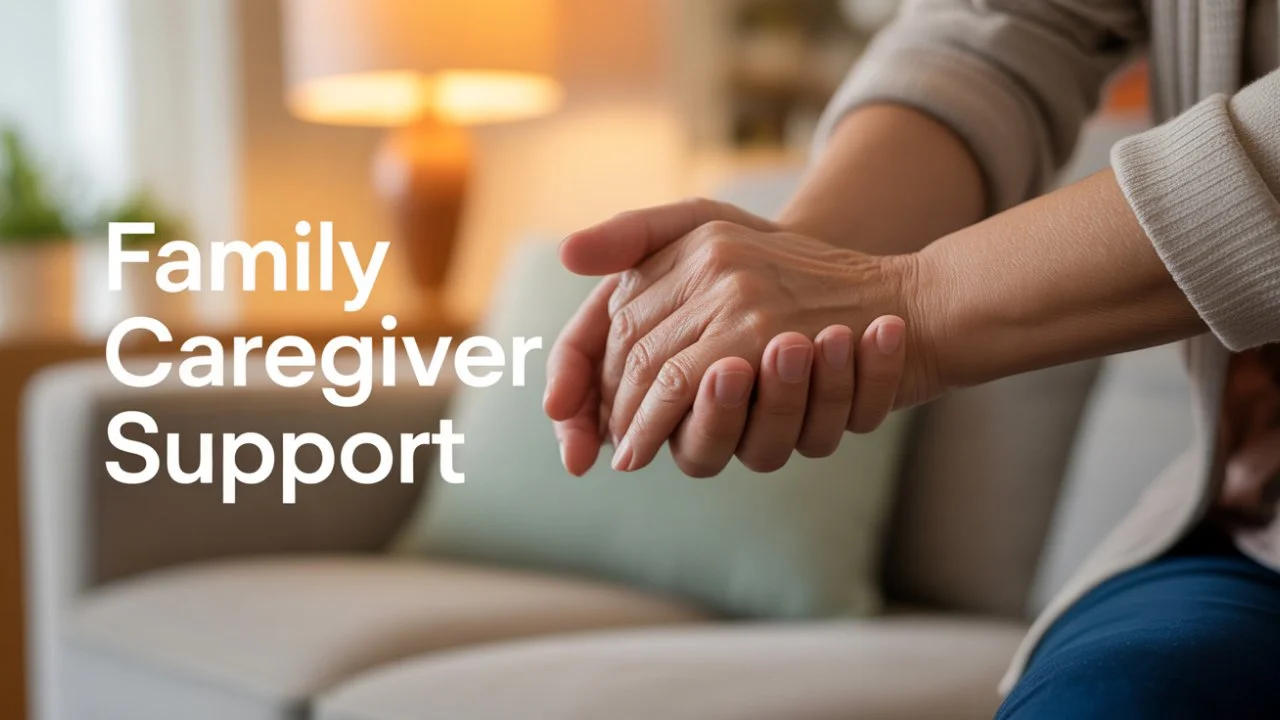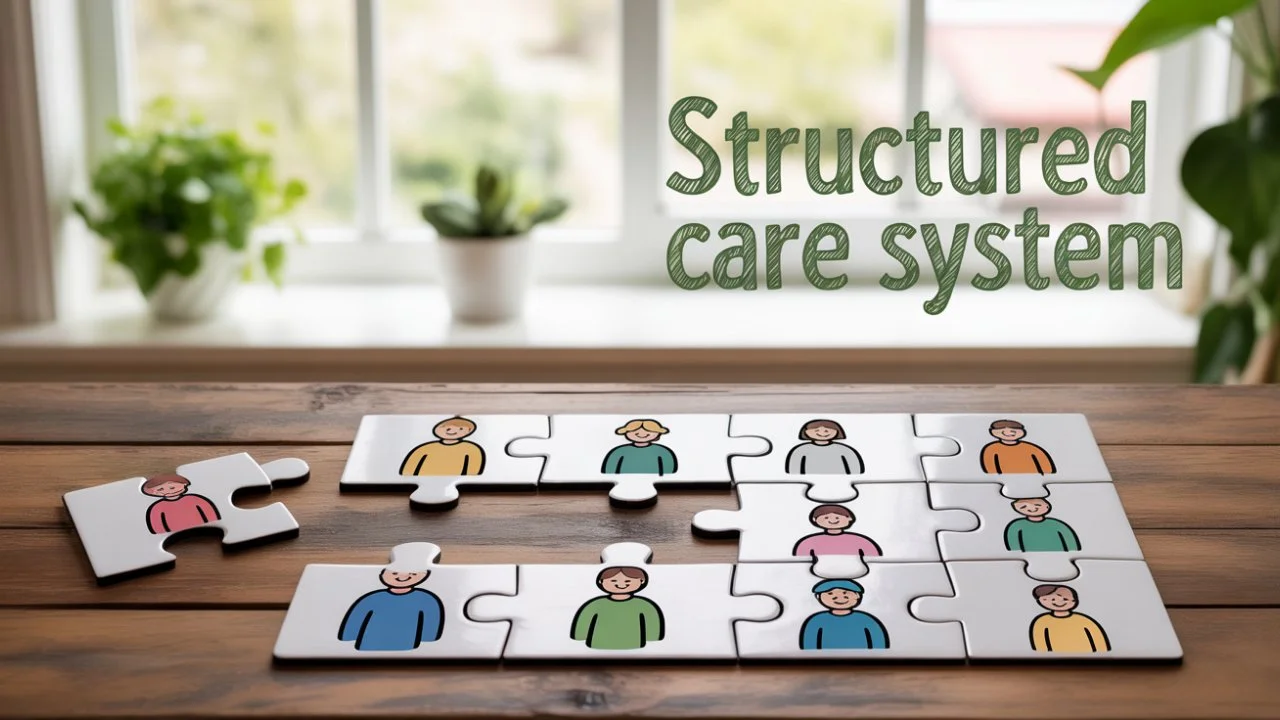Structured Family Caregiver: How to Qualify, Get Paid, and Access Support
An estimated 53 million Americans shoulder the daily responsibility of caring for elderly or disabled loved ones, often at significant personal and financial cost. Structured family caregiving offers a lifeline by turning unpaid care into a tax-free stipend through state Medicaid waivers—helping caregivers improve household stability while supporting aging in place. In this guide you will discover what structured family caregiving is and how it works, the eligibility criteria for both caregivers and care recipients, step-by-step application guidance, payment structures, training and support opportunities, state-specific program differences, and answers to the most common concerns. Along the way, you’ll learn how Paid.care’s 24/7 coaching, application assistance, and mobile app simplify each phase so you can focus on delivering high-quality, compassionate in-home care.
What Is Structured Family Caregiving and How Does It Work?
Structured family caregiving is a Medicaid-funded service that supports eligible care recipients by compensating family members who deliver in-home assistance. This benefit operates under Home and Community-Based Services (HCBS) waivers—specifically 1915(c) programs—which permit states to pay caregivers directly rather than requiring institutional care. When approved, family caregivers receive a tax-free stipend or hourly payment, improve care quality by maintaining consistent routines, and promote emotional well-being through familiar relationships.
What Defines a Structured Family Caregiver?
A structured family caregiver is a non-professional individual—often a spouse, adult child, or other relative—who provides hands-on assistance with Activities of Daily Living (ADLs) such as bathing, dressing, meal preparation, medication reminders, and mobility support. This role entails meeting state requirements for residency, background checks, and training, and delivering care that aligns with a formal service plan overseen by a case manager. Embracing this role enhances both recipient safety and caregiver confidence.
How Is Structured Family Caregiving Funded Through Medicaid?
Medicaid funds structured family caregiving via HCBS waivers that reallocate long-term services dollars from nursing facilities to community settings. Each state crafts its waiver under Section 1915(c), defining eligibility thresholds—typically income limits at or below 300 percent of the Federal Poverty Level and a nursing-home-level-of-care assessment. Once enrolled, the program covers caregiver stipends, caregiver training, and often respite services to sustain long-term home care.
Medicaid and Home-Based Care
Medicaid plays a crucial role in financing home and community-based services (HCBS), offering states flexibility in designing programs to support individuals who need long-term care. These waivers allow states to provide services in home or community settings rather than requiring institutionalization, often including financial assistance for family caregivers.
What Are the Benefits of Structured Family Caregiving?
Financial Support – A tax-free stipend mitigates out-of-pocket expenses and income loss.
Aging in Place – Loved ones remain in their homes, preserving independence and comfort.
Care Continuity – Familiar routines and relationships enhance emotional stability and trust.
Respite Integration – Scheduled breaks reduce burnout and sustain caregiver health.
Skill Development – Access to training and certifications bolsters care quality and safety.
These benefits set the stage for improved quality of life and reduced institutionalization rates, reinforcing the value of community-based care models.
What Are the Eligibility Requirements for Structured Family Caregivers and Care Recipients?
Eligibility hinges on dual approval of the care recipient’s medical and financial status alongside the caregiver’s qualifications. Meeting these requirements ensures compliance with Medicaid and state waiver regulations.
What Are the Care Recipient Eligibility Criteria?
Income and Asset Limits – Income typically under 300 percent of the Federal Poverty Level; assets capped per state guidelines.
Nursing Home Level of Care – A clinical assessment confirms the need for institutional-level support if not cared for at home.
ADL Impairments – Difficulty in at least two Activities of Daily Living (e.g., bathing, eating, dressing).
These criteria define the recipient’s functional needs and financial eligibility to access home-based services instead of facility care.
Who Qualifies as a Family Caregiver?
Adult relatives or designated legal guardians
Residents of the same household or within a specified proximity
Background-checked and free of disqualifying criminal history
Trained or willing to train in care protocols
Meeting these standards ensures caregivers deliver safe, reliable care consistent with program requirements.
How Do Activities of Daily Living (ADLs) Affect Eligibility?
ADL assessments quantify a care recipient’s dependency level and directly influence stipend rates. States assign point values or scoring thresholds for each ADL impairment—higher scores often yield higher payment rates. Thorough documentation of ADL limitations streamlines approval and maximizes compensation.
Activities of Daily Living (ADLs) and Care Needs
ADLs are fundamental to assessing a care recipient's need for assistance and determining the level of support required. The assessment of ADLs, such as bathing, dressing, and eating, directly influences the services and financial support provided to both the care recipient and the caregiver.
Can Spouses and Non-Family Members Be Paid Caregivers?
Yes, many waivers permit spouses, domestic partners, and in some cases, non-family individuals—such as close friends or neighbors—to qualify as paid caregivers. State rules vary on residency and relational definitions, so reviewing specific waiver policies is essential to determine allowable caregiver roles.
How Do You Apply to Become a Paid Structured Family Caregiver?
The application process involves gathering paperwork, completing assessments, and submitting forms to your state Medicaid office or designated waiver agency. Organized preparation accelerates approval and payment.
What Documentation Is Needed for Application?
Proof of care recipient’s Medicaid eligibility (award letter or application receipt)
Physician’s order and nursing-home level-of-care evaluation
Detailed ADL assessment forms completed by a clinician
Caregiver background check clearance and identification documents
Having these documents ready helps case managers verify eligibility without delays.
How Long Does the Application and Approval Process Take?
Approval timelines vary by state but generally range from 4 to 12 weeks. Medicaid offices conduct medical and financial reviews, schedule ADL assessments, and finalize approval. Paid.care’s care coaches typically expedite this timeline by coordinating documentation, scheduling assessments, and monitoring application status on your behalf.
What Are the Common Challenges and How to Overcome Them?
Applicants often face incomplete documentation, unclear waiver rules, and delayed assessments. Overcome these by:
Creating a checklist of required forms
Engaging a care coach to clarify waiver specifics
Following up regularly with case managers
Proactive communication and expert guidance reduce errors and speed approval.
How Does Paid.care Simplify the Application Process?
Paid.care offers free, 24/7 care coaching that organizes paperwork, guides clinical assessments, and submits forms directly to Medicaid. Their mobile app tracks application milestones, prompts missing items, and sends real-time updates—ensuring caregivers stay informed and focused on care, not bureaucracy.
How Is Payment Structured for Structured Family Caregivers?
Payment models vary but share common elements: stipend amounts, payout schedules, and tax treatment. Understanding these details helps caregivers plan finances and track compensation.
What Types of Payments and Stipends Are Available?
Flat Stipend – A fixed monthly or weekly amount regardless of hours.
Hourly Rate – Compensation based on documented care hours, often tax-free up to state caps.
Tiered Rates – Higher rates for intensive ADL needs or specialized medical tasks.
Choosing the right payment model depends on recipient needs and caregiver availability.
How Are Payments Processed and Managed?
Once approved, payments are issued via:
Direct deposit to a caregiver bank account
Reloadable debit card tied to stipend funds
Monthly checks mailed to the caregiver
Paid.care’s app integrates with state payment systems to track hours, generate timesheets, and reconcile payments—reducing errors and ensuring timely receipt.
What Are the Tax Implications of Caregiver Payments?
Most structured family caregiving payments are tax-free stipends under Medicaid rules, provided the program meets HCBS waiver criteria. Caregivers should confirm state policies and consult a tax advisor if income exceeds exemption limits or if additional income sources affect tax status.
Are There Alternative Payment Options Beyond Medicaid?
When Medicaid is unavailable or insufficient, caregivers can explore:
VA Caregiver Support Programs (e.g., Aid and Attendance) for qualified veterans
Long-Term Care Insurance policies that permit family caregiver reimbursement
Paid Family Leave benefits in select states offering partial wage replacement
These options broaden financial pathways when HCBS waivers do not fully cover caregiving needs.
What Training and Support Are Available for Structured Family Caregivers?
Ongoing education and relief services empower caregivers to deliver safe, effective care while safeguarding their own well-being.
What Types of Caregiver Training and Certification Does Paid.care Offer?
Paid.care provides accredited online courses covering:
ADL assistance techniques for bathing and mobility
Medication management and safe administration
Infection control and chronic condition monitoring
Certificates earned through Paid.care boost confidence, fulfill waiver training requirements, and demonstrate professional skill.
How Does Respite Care Support Family Caregivers?
Respite care grants temporary relief by dispatching qualified aides or providing short-term facility stays. This support prevents burnout, reduces stress, and ensures caregivers remain healthy and engaged in long-term care roles.
What Emotional and Care Coaching Resources Are Provided?
Caregivers benefit from:
24/7 care coaching for guidance on medical tasks and waiver navigation
Counseling referrals for stress management and grief support
Peer support groups to share strategies and build community resilience
These resources reinforce caretaking quality and emotional stamina.
How Do State-Specific Structured Family Caregiving Programs Differ?
State waivers reflect local policy, budget, and demographic needs. Comparing these programs empowers caregivers to navigate options where they live.
What Are the Key Features of Indiana’s Structured Family Caregiving Program?
Indiana’s Aged & Disabled Waiver pays family caregivers $12–$18 per hour based on ADL needs and regional cost adjustments. The program caps hours per week but includes robust respite services and mandatory training through state-approved vendors.
How Does Michigan’s Home Help Program Support Paid Family Caregivers?
Michigan’s Home Help Program offers $11–$16 per hour, flexible scheduling, and a consumer-directed care model that lets families hire agency staff or relatives. Caregivers complete an online orientation and record hours via the state’s MiLogin portal or Paid.care’s mobile interface.
What Should Caregivers Know About Illinois’ Community Care Program?
Illinois compensates family caregivers at $13–$17 hourly, requires quarterly care plan reviews, and provides enhanced rates for complex medical tasks. The program emphasizes case manager collaboration to adjust payment tiers as needs evolve.
How to Find and Compare Medicaid Waiver Programs by State?
Begin by visiting your state Medicaid agency’s website or using CMS’s waiver search tool to identify HCBS waivers. Compare program names, eligibility criteria, payment rates, and training requirements side by side to select the best fit for your family.
FAQs
-
Family members secure payment through state HCBS waivers that allow Medicaid funds to cover caregiver stipends or hourly rates, turning unpaid support into tax-free compensation.
-
When Medicaid eligibility is not met, explore VA caregiver programs, long-term care insurance benefits, employer-sponsored paid leave, or community grants as alternative funding sources to support in-home care.
-
Veterans and their families may qualify for VA caregiver programs—such as Aid and Attendance or the Program of Comprehensive Assistance for Family Caregivers—that offer stipends, training, and respite similar to HCBS waivers.
-
To begin, gather proof of income, asset statements, physician orders, and ADL assessments, then contact your state Medicaid office or a Paid.care coach to verify requirements, prepare forms, and submit your application for timely review.
Family caregivers can transform the demands of daily support into sustainable, compensated care that honors both recipient needs and caregiver well-being. By understanding structured family caregiving’s mechanisms, meeting eligibility criteria, and leveraging comprehensive training and support, you can deliver high-quality home care while securing the financial assistance you deserve. With Paid.care’s expert guidance, application management, and mobile tracking, every step from assessment to payment is streamlined—so you can focus on what matters most: caring for family.




